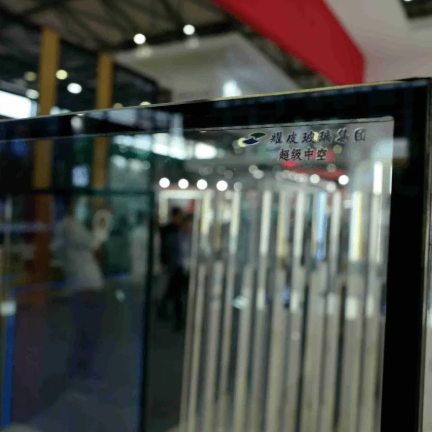إن اختيار المواد التي نستخدمها يؤثر حقًا على المظهر العام للمباني. خذ على سبيل المثال الزجاج المعماري، الذي أصبح عنصرًا مميزًا في العمارة الحديثة، حيث يجمع بين الشكل والوظيفة بطريقة لم نرها من قبل. يمنح الزجاج المهندسين المعماريين وفرق الإنشاء أداة رائعة للعمل معها عند تصميم مساحات تكون جميلة وتفتح المجال لكم كبير من الضوء الطبيعي. عادةً ما تجذب هذه المساحات انتباه الناس من الجانب الآخر للشارع، لكنها في الوقت نفسه تؤدي وظائف حقيقية لا تقتصر على الشكل الجميل فقط. إذ إن الشفافية تسمح برؤية أفضل داخل المبنى، ويمكنها حتى مساعدة في تقليل تكاليف الإضاءة خلال النهار.
إن الاستخدام المتزايد للزجاج المعماري عبر المشاريع التجارية والسكنية والمؤسسية يعكس الدور المحوري الذي يلعبه في تحديد لغة التصميم المعاصرة. يستعرض هذا المقال كيف يعزز الزجاج المعماري القيمة الجمالية من خلال تحسين الشفافية، ودمج الإضاءة الطبيعية، وتوفير واجهات أنيقة، والمساهمة في مبادئ التصميم المستدام.
الشفافية والاتصال البصري
خلق تجربة سلسة بين الداخل والخارج
يتيح الزجاج المعماري للمهندسين المعماريين إزالة الحدود بين البيئات الداخلية والخارجية. حيث تسهم الألواح الزجاجية الكبيرة والجدران الستارية والنوافذ في توفير مناظر غير متقطعة، خلق شعور بالانفتاح والاتساع لا يمكن للمواد التقليدية منافسته.
تساهم هذه الشفافية في الاتصال البصري مع الطبيعة أو البيئة الحضرية المحيطة، مما يعزز تجربة قاطني المبنى ويرفع من جاذبيته الجمالية بشكل عام.
تعزيز إدراك المساحة والضوء
إن الزجاج المعماري لا يُحسّن الرؤية فحسب، بل يعزز أيضًا دخول الضوء الطبيعي. يمكن أن تملأ الزجاجات المصممة جيدًا المساحات الداخلية بالضوء النهاري، مما يقلل الاعتماد على الإضاءة الاصطناعية ويخلق أجواءً نابضة بالحياة وجذابة.
يمكن أن تضيف خصائص الانعكاس والانكسار في الزجاج اهتمامًا بصريًا من خلال اللعب الدقيق للضوء والظل، وتحول الأسطح الثابتة إلى ميزات ديناميكية.
الواجهات الحديثة والخطوط المعمارية الأنيقة
التصميم الحد الأدنى والأسطح النظيفة
الزجاج المعماري يتناسب الزجاج مع الجماليات الحدّية بفضل أسطحه الملساء وغير المنقطعة وبإمكانيته في التشكيل إلى ألواح كبيرة بلا إطار. وهذا يخلق واجهات عصرية وأنيقة تعكس الذوق الرفيع والابتكار.
تساهم الواجهات الزجاجية في الهندسة المعمارية الشهيرة من خلال التأكيد على الخطوط النظيفة والدقة الهندسية ، مما يجعل المباني تبرز بأناقة حديثة.
التكامل مع المواد الأخرى
يُحسّن الجمع بين الزجاج المعماري مع المعادن أو الخرسانة أو الخشب من التباين الحسي والعمق البصري. ويؤدي الزجاج دوراً كمادة مكمّلة تُخفف من عبء العناصر الإنشائية الثقيلة، مما يخلق تركيبات متناغمة توازن بين الصلابة والخفة.
ويمكن هذا الدمج المصممين المعماريين من توسيع حدود الإبداع وتقديم تصاميم جريئة ومعاصرة في آنٍ واحد.

التخصيص والتأثيرات البصرية
تشكيلة متنوعة من أنواع الزجاج وأسطحه النهائية
يأتي الزجاج المعماري بأنواع مختلفة عديدة — مظلل، مُزَوَّج، مُنَمَّط، أو مطلي — مما يسمح للمصممين بتخصيص المظهر الجمالي للمباني لتتناسب مع السياق والوظيفة. على سبيل المثال، يوفر الزجاج المُزَوَّج الخصوصية دون التضحية بالإضاءة، في حين تمنح الطلاءات العاكسة تأثيرات تشبه المرآة تتغير مع ظروف الإضاءة المختلفة.
وتسهم هذه الخيارات في إحداث تأثيرات بصرية ديناميكية، وتضيف أبعاداً من الاهتمام والشخصية للمباني.
اللون والملمس كأدوات تصميم
يمكن استخدام الزجاج المعماري الملون أو الملمس أن يكسر الرمادية ويُدخِل الحيوية أو الدقة حسب النية التصميمية. ويمكن لتدرجات الألوان أو الأنماط الزخرفية أن تستحضر إشارات ثقافية أو هوية العلامة التجارية، مما يجعل الزجاج مكونًا تعبيريًا في سرد العمارة.
تزيد هذه التخصيصات من فريدة المبنى وتميزه الجمالي.
المساهمة في التصميم المستدام والصحي
الكفاءة الطاقوية والراحة
غالبًا ما يتضمن الزجاج المعماري الحديث طلاءات متقدمة وتكنولوجيا عزل تحسن الأداء الطاقي. وتقلل الزجاج عالية الأداء من اكتساب الحرارة أو فقدانها، مما يحافظ على درجات حرارة داخلية مريحة مع السماح بدخول الضوء الطبيعي.
يعني هذا التوازن بين الشكل والوظيفة أن الخيارات الجمالية تدعم أيضًا أهداف الاستدامة، مما يعزز من المصداقية البيئية للمبنى إلى جانب جاذبيته البصرية.
تعزيز الصحة العامة من خلال الإضاءة الطبيعية
يؤثر التعرض المتزايد للضوء الطبيعي بشكل إيجابي على رفاهية الأشخاص وإنتاجيتهم وحالتهم المزاجية. يُحسّن زجاج البناء من فرص الإضاءة الطبيعية، ويُربط بين الناس وإيقاعات الطبيعة ويقلل من التوتر.
هذا النهج الشامل في التصميم يُحسّن من الجودة الجمالية والتجربة العامة، مما يجعل الزجاج المعماري ركيزة أساسية في العمارة المرتكزة على الإنسان.
الأسئلة الشائعة
ما هي أنواع الزجاج المعماري التي تُستخدم عادةً لتعزيز جماليات المباني؟
تشمل الأنواع الشائعة الزجاج المقسّى، والزجاج المصفّح، والزجاج المصبوغ، والزجاج المُطفأ، والزجاج المطلي بطبقة منخفضة الانبعاث (Low-E)، حيث يقدّم كل نوع خصائص بصرية وأداء مختلفة.
هل يمكن للزجاج المعماري تحسين الكفاءة الطاقية دون التأثير السلبي على التصميم؟
نعم، تُحسّن الطلاءات المتقدمة والتزجيج المزدوج أو الثلاثي العزل مع الحفاظ على الشفافية والجاذبية الجمالية.
كيف يؤثر الزجاج المعماري على صيانة المبنى؟
تتطلب واجهات الزجاج تنظيفًا دوريًا للحفاظ على وضوحها ومظهرها، ولكن يمكن لبعض المعالجات الحديثة أن تقلل من تراكم الأوساخ وتسهل الصيانة.
هل يناسب الزجاج المعماري جميع أنماط المباني؟
على الرغم من مرونته، يكون الزجاج المعماري الأكثر فاعلية في التصاميم الحديثة والمعاصرة، ويمكن استخدامه بشكل إبداعي في الأنماط التقليدية أو الانتقالية.
